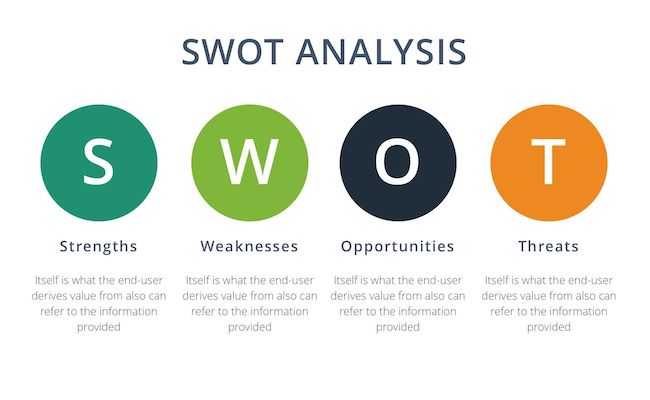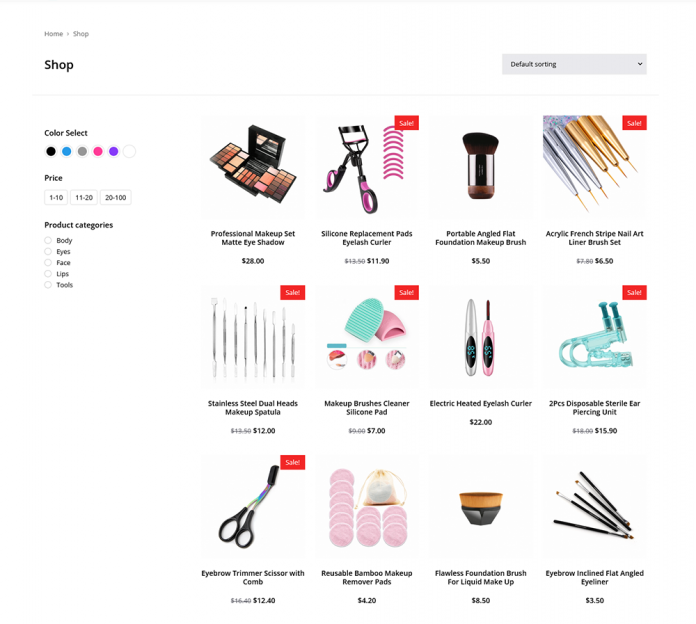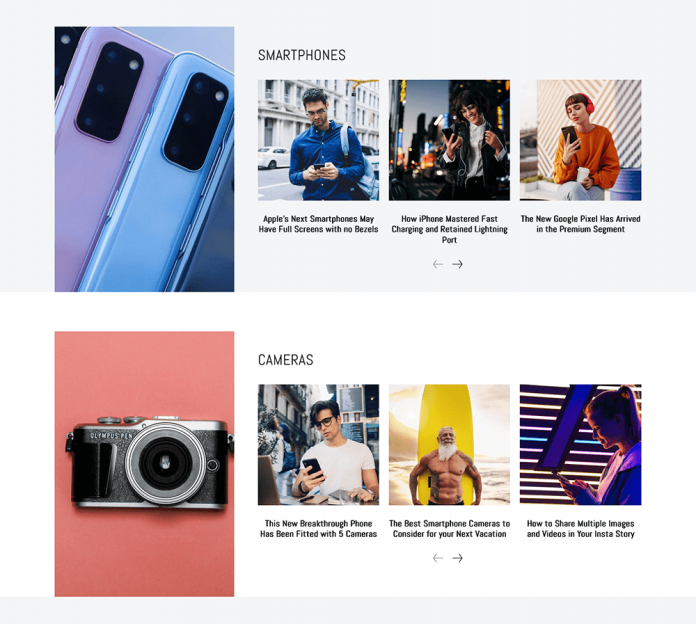All About Google SWOT Analysis: Google LLC
Google SWOT analysis, Google LLC, a subsidiary of Alphabet Inc., is a key player in the online services sector. The internal and external strategic elements that influence the technology business are examined in this SWOT analysis. These strategic considerations are related to how companies deal with competitors.
In the face of rapid innovation and change in the online services and consumer electronics markets, this competitive landscape necessitates strengths to ensure business survival and success.
In the industrial environment, this SWOT analysis evaluates Google’s strengths and weaknesses, as well as opportunities and threats.
When evaluating the firm, we take into account market developments caused by rapid technological advancements as well as shifting consumer preferences and expectations. At Google LLC, a SWOT analysis is useful for strategic planning.
Larry Page and Serge Brin founded Google in 1998 in California, United States of America. As a study project, the couple founded a massive technological firm while attending Stanford University.
Since then, the company has expanded dramatically and established itself as a technology titan in the mainstream media.
Global search engines have altered the digital landscape. It has made life easier. To obtain information, all that is required now is a click of the mouse.
Google’s game-changing operations have made incremental progress.
It has had a significant impact on the global economy. Corporations, clients, consumers, and nearly anyone else can now easily access company information at any time and from any location.
Quicks Fact About Google
Company: Google (a subsidiary of Alphabet Inc.)
CEO: Sundar Pichai
Year founded: 1998
Headquarter: Mountain View, USA
Number of Employees (FY2019): 118,899
Public or Private: Public
Ticker Symbol: GOOGL(Class A) and GOOG(Class C)
Market Cap (Sept 2020): $1.032 Trillion
Annual Revenue (FY2019): $161.86 Billion
Profit |Net income (FY2019): $34.34 Billion
Go through:Audit your website and check SEO score
Google is one of the most valuable corporations on the planet as a result of its innovative and profitable business model, as well as its exceptional branding and related initiatives.
The internal and external elements identified in this SWOT analysis are taken into account in the strategic planning and competitive positioning of the technology organization.
These SWOT analysis elements are related to Google’s overall competitive advantage strategy and aggressive growth tactics.
Google’s Strength
The business analysis identifies information and communication technology strengths as well as their impact on corporate competitiveness.
According to Google’s SWOT analysis model, it has strengths that enable it to compete successfully on a global scale.
Google’s success in computing technologies, innovation, the internet environment, and market conditions is aided by the following internal factors:
- Market Leader in Search Engines
Google’s greatest strength is that it is the undisputed leader in search engines, controlling the vast majority of global internet searches.
Google has a market share of more than 65 percent in online searches, and its competitors are nowhere near it.
There is no denying that Google is the world’s most popular online search engine. According to Statista, Google will have an 86.86 percent market share in desktop searches worldwide by July 2020.
- Internet Search Engine
Google Search is the company’s search engine that Internet users use to find information.
It is the most popular search engine in the world, with an 86.6 percent desktop market share and a 95.03 percent mobile market share as of February 2021.
Google dominates the mobile search market in Europe, controlling over 97 percent of the market.
Yandex has a 0.65 percent market share, followed by Google, Yahoo, Baidu, and Baidu, which have market shares of 2.69 percent, 1.47 percent, 1.33 percent, and 0.65 percent, respectively.
- Massive Data Gathering
Google has developed a slew of applications and tools. Android is the operating system that powers more than half of the world’s smartphones.
For personal and business email, Gmail (and GSuite) is the industry standard. Google Drive is a cloud storage service that provides both free and paid digital file storage.
Google also owns YouTube, the world’s most popular video-sharing network. Google employs these tools to tailor its advertisements to individual users based on the data it collects.
- User Traffic Generation Capability
There is no doubt that Google has become a household name around the world as a result of its ability to increase internet traffic.
Google receives 1.2 billion unique queries per month on average. It has an unrivaled competitive advantage in the industry.
- Cellular Operating System
Android OS is the most popular mobile operating system in the world, and it is used by some of the world’s leading smartphone manufacturers, including Samsung, Huawei, Xiaomi, Vivo, OPPO, and Lenovo.
In February 2021, Apple’s iOS had a 27.33 percent market share, compared to Google Android’s 71.9 percent. Android is the market’s sole major player.
Other Google products, such as Google Play, Google Maps, Chrome, and Google Search, have grown in popularity as Android’s market share has increased, further solidifying Google’s leadership.
Off page SEO tips: Forum Submission/Posting Sites List
- Advertising-based business model
Ad revenue accounts for the vast majority of Google’s profits. The corporation keeps 30% of the revenue generated by the Google Play store (found on all Android operating devices).
The corporation’s ad revenue strategy, which generates enormous profits through agreements with third-party sites, has served it well in terms of its ability to hoover up resources and grow both its top and bottom lines. This is yet another critical strength of the company that has contributed to its rise.
Partnerships with third-party websites also generate ad revenue. These strategies helped Google generate $38.9 billion in advertising revenue in 2019, representing a 19% increase over the previous year.
Rapid Development
Google is one of the world’s most rapidly growing corporations. The company had less than 300 employees in 2001; by 2004, it had grown tenfold to 3000; by 2011, it had grown tenfold again to 32,470 employees; and by 2015, it had more than doubled to 61,814 employees. By 2018, Google had surpassed 98,000 employees, and by December 2019, it had grown to over 118,899 employees.
Google’s Weaknesses
Google’s success is hampered by flaws that stymie corporate expansion. Weaknesses are defined as internal variables that reduce efficiency, impede growth, or create operational challenges for technical organizations in the SWOT analysis paradigm. Google’s business viability is jeopardized by the following flaws:
- Ad Rates Are Falling
In recent years, particularly in 2013, the company has seen a decrease in advertising revenue, which has impacted its profitability.
This is due in part to the ongoing global economic downturn and in part to aggressive marketing by competitors.
Google will face challenges in integrating search engine revenue into its devices, as Apple has already done.
- The Google ranking algorithm is a closely guarded secret.
Why do some websites and articles rank higher on Google than others? Being the first result for a term can be lucrative — if visitors click on your site, you have a better chance of earning advertising money.
Business owners will pay for links pointing to their website. While search engine optimizers investigate popular articles and websites, only Google knows the exact method used to rank first.
Because of Google’s lack of transparency, users and business owners have grown wary of the system.
- Data collection scares users
The company’s greatest strength is also its greatest weakness: massive user data collection.
Customers are concerned about how much access Google has to their personal information via the search engine and apps on their phones.
Unfortunately, their life without Google is complicated. You’d have to first give up your Google Account, YouTube Account, and Android phone.
- Advertising revenues are risky.
Advertising should not be the sole source of revenue. The “cost-per-click” (CPC) metric is of particular interest to Google. It establishes the amount of money that advertisers are willing to pay for traffic.
When CPCs fall, Google’s profits fall proportionally. When advertisers switch platforms and implement new ad types on Instagram or Facebook, CPCs may fall. Both pose a serious threat to Google’s advertising revenue.
Google’s reliance on advertising raises concerns about the company’s long-term viability. In 2019, advertising-related initiatives accounted for 83.9 percent of the company’s total revenue.
Advertising is a cyclical, competitive industry that is heavily influenced by macroeconomic factors.
- Policies on privacy
Numerous experts have chastised Google for its over-reliance on privacy, particularly when it comes to concealing information about algorithms. Since then, the company has taken corrective action.
- Fraudulent Business Practices
Google unfairly uses its dominant position as the most popular search engine to keep new entrants out of the market. Google was recently sued for allegedly conspiring with Apple to make it the default search engine in the United States for its browser.
- Excessive employee turnover
Despite the benefits Google offers its employees, such as comprehensive medical and health care, travel insurance, and luxurious vacations, the company has a high turnover rate. This is common in technology organizations; Amazon employees frequently stay for a year, while Apple employees stay for two.
Customers despise companies that promote social evils and oppression or collaborate with tyrants. In response to the Black Lives Matter protests, approximately 1,600 Google employees petitioned the company in June 2020 to discontinue providing G-suite services to police departments.
- Inadequate pricing strategy
On June 30, 2020, Google raised the monthly membership fee for its YouTube TV service from $49.99 to $64.99. Google claims that the $15 (30 percent) increase reflects the increased cost of content, while others argue that the increase is absurd.
Most streaming services, such as Netflix, Disney+, and Peacock, cost $5 to $15 per month and provide more content than YouTube’s 80 TV channels. Google may lose a significant number of its 2 million YouTube subscribers as a result of the price increase.
Google Possibilities
Google has room for improvement and expansion. Google SWOT analysis considers opportunities as external factors that present opportunities for growth and improvement in a technology firm’s performance.
Google LLC has several exciting opportunities within its businesses and markets that it can leverage:
- The Android operating system.
Google’s obvious efforts to spread the Android operating system provide the most room for expansion. The company now has a better chance of competing with Apple’s iOS.
An Android platform is a good example. The company has grown to be a major rival to Samsung and Apple. Users prefer Android devices because they allow for more customization than iOS devices.
Google phones, on the other hand, receive updates almost immediately. Samsung phones run Android, but they don’t receive system updates for months.
One of Google’s most significant opportunities has come from its pioneering attempt to provide the Android OS (Operating System), which has elevated Google to direct competition with Apple and Samsung.
- Market for Wearables
The smartwatch and fitness band market is booming and lucrative for wearable tech companies like Apple and Samsung, and Google paid $2.1 billion for Fitbit in November 2019.
Google Play and Google Glass are two of the most recent additions to the Google ecosystem.
Google is gearing up to release Google Glasses and Google Play. It has the potential to accelerate Google’s growth and advancement.
Google Glass and Google Play are poised to be game changers for the company, representing enormous opportunity for the corporation to capitalize on.
The ability of the corporation to leverage this feature will most likely propel it forward in the nano-computing arena in the future.
- Business models that do not rely on advertisements
If Google is to remain profitable, it must diversify its revenue streams beyond advertising. The company is making progress, as evidenced by its push to move toward commercial transactions through various sites such as Google Books, Google Maps, and others.
Ads currently account for the vast majority of Google’s revenue. It’s a volatile market that is easily swayed by competitor advertisements. Google’s revenue streams should be diversified, and commercial transactions should be driven through the company’s numerous apps.
Cloud Computing
Because of its extensive experience delivering storage and cloud solutions, Google remains interested in cloud computing.
The cloud computing model is a great way to break into the enterprise market.
In fiscal year 2019, Google Cloud Platform (GCP) and its services accounted for slightly more than 5.5 percent of Google’s annual revenues ($8.9 billion). Google is heavily investing in cloud services in order to diversify its revenue streams.
6th. Cloud Storage
Cloud computing and cloud storage can greatly benefit Google’s organization. The company has announced the launch of a new online store where all businesses can purchase cloud-based software.
MobileIron, Inc., a security, analytics, and app distribution company, collaborated with the company to integrate its cloud-based commerce platform with MobileIron’s solutions.
- Work from Home
Microsoft and Zoom have made billions of dollars from their video conferencing services, indicating an increasing demand for remote work solutions.
Google has already begun to capitalize on the growing demand for remote work solutions by incorporating video conferencing features into Gmail in order to attract businesses looking to enable their employees to work remotely.
- Expanding into new AI, machine learning, and robotics industries
Google is capable of rapidly expanding into artificial intelligence, machine learning, and robotics.
The company has already established itself as a leader in driverless cars, brought the smart home to life with the Google Home speaker, and paid $2.1 billion to acquire Fitbit.
Google’s Threats
Threats to the industry include the proliferation of businesses and their rapid technological innovation.
As defined by the SWOT analysis methodology, these risks are external variables that reduce or obstruct the technological business. Google’s strategy and profitability are jeopardized by the following threats:
- Computing on the Go
As mobile computing grows in popularity, Google faces a new threat as new competitors seize the opportunity to significantly expand their mobile computing presence.
- Apple’s erratic behavior
Apple changed the default search engine for Siri and Spotlight to Bing. Furthermore, it enabled ad-blockers while browsing websites in Safari and even went so far as to prevent Google Maps from working with CarPlay.
- Google vs. Amazon
Google, too, must be wary of Amazon. People are increasingly turning to Amazon for store recommendations rather than Google.
Many Amazon reviews, stores, and sellers have influenced users to prefer Amazon over Google.
- High-stakes competition
Innovation is neither easy nor cheap. If Google does not keep up its pace of innovation, it risks losing its dominant position and jeopardizing the business.
Facebook and Amazon are Google’s main competitors. Google’s two competitors are catching up. Google’s dominance may be threatened by their new features and growing popularity.
- Antitrust squabble
For years, Google has been embroiled in antitrust battles with both US and EU lawmakers. Google has filed an appeal against a five-billion-euro fine imposed by EU antitrust officials.
- Uncertainty about a Pandemic
Many companies’ operations and profitability have been harmed as a result of recent events, including Google. Google’s advertising revenue in the United States is expected to fall by 5.3 percent, the first drop since 2008.
In the United States, the company’s net advertising income fell to $39.58 billion in 2020, down from $41.8 billion in 2019. Because of economic insecurity, Google’s revenue and profit margins are jeopardized.
- Facebook business pages, groups, and pages
Facebook may be Google’s most formidable foe. Every month, over one billion people use the social media network.
It has a marketplace, business pages for exchanging information and promotional messages, and advertising to target specific markets.
Facebook is also a source of news – before searching for an answer on Google, some people seek advice from friends and strangers in Facebook groups.
- Relationships with China
Google had planned to provide cloud computing services in China, but was forced to abandon the project due to rising geopolitical concerns.
If political tensions spread to other parts of the world, Google’s global operations may suffer.
- Last Thoughts on Google SWOT Analysis
The SWOT analysis performed by Google identifies the company’s strengths, weaknesses, opportunities, and threats. Google’s fame allows it to make huge profits.
Google is not going away anytime soon. It will continue to steal user data, target advertisements to specific users, and buy out businesses for billions of dollars.
Google will continue to be the most popular search engine and a dominant force in the smartphone, smart home, and advertising industries.
Year after year, the search engine grows and improves its technology. If Google addresses its vulnerabilities and threats, no competitor will be able to outperform or even compete with it.
The SWOT analysis is a fun way to gain a better understanding of a company.
However, predicting where the next threat in the corporate landscape will come from or whether the opportunity you’re pursuing will succeed is extremely difficult. This is why a strong experimental framework is essential.







